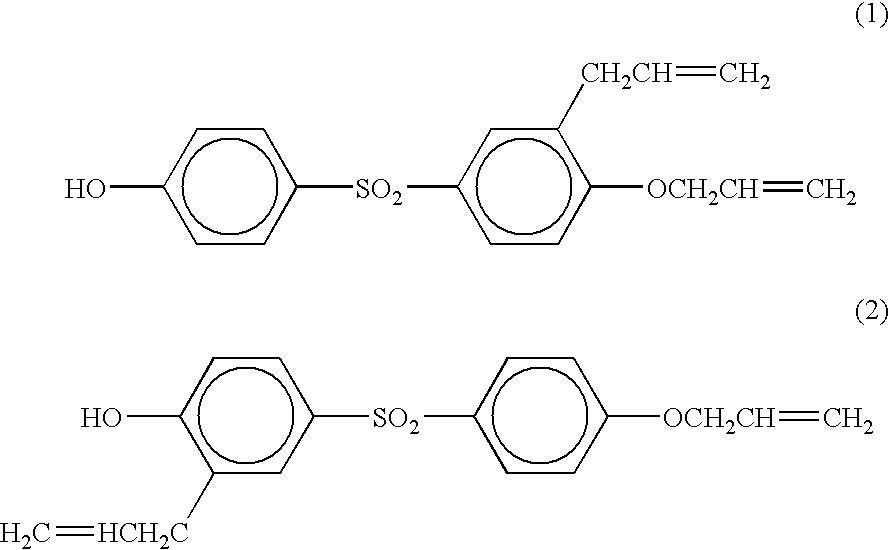Heat-sensitive recording material
a recording material and heat-sensitive technology, applied in thermography, printing, duplicating/marking methods, etc., can solve the problems of insufficient color development and heat-resistant storage stability at the image portion and the background portion, and achieve enhanced color development sensitivity and image storage stability characteristics. , to achieve the effect of maintaining heat-resistant and image storage stability
- Summary
- Abstract
- Description
- Claims
- Application Information
AI Technical Summary
Benefits of technology
Problems solved by technology
Method used
Image
Examples
example 1
—Production of Heat-sensitive Recording Material—
(1) Preparation of Coating Solution of Under Layer
[0058]Coating solution of under layer was prepared by mixing the following ingredients, applied on a sheet of bond paper with a basis weight of 60 g / m2 as a substrate so that the deposition amount after drying was 3.0 g / m2, and dried to obtain a sheet of under layer-applied paper.[0059]Non-foaming plastic minute hollow particles (the hollow ratio is 50%, the average particle diameter is 3 μm) . . . 60 parts by mass[0060]Styrene / butadiene copolymer latex (the solid content is 47.5%) . . . 30 parts by mass[0061]Water . . . 10 parts by mass
(2) Preparation of Dye Dispersion (Solution A)
[0062]The following ingredients were dispersed by a sand mill until the average particle diameter was 0.5 μm, to prepare dye dispersion (solution A).[0063]2-anilino-3-methyl-6-dibutylaminofluoran . . . 20 parts by mass[0064]10% by mass aqueous solution of polyvinyl alcohol . . . 20 parts by mass[0065]Water ....
example 2
—Production of Heat-sensitive Recording Material—
[0087]A heat-sensitive recording material of Example 2 was produced in the same manner as in Example 1 except that an added amount of the diphenyl sulfone compound represented by formula (1) was changed from 3 parts by mass to 0.5 parts by mass.
example 3
—Production of Heat-sensitive Recording Material—
[0088]A heat-sensitive recording material of Example 3 was produced in the same manner as in Example 1 except that instead of adding 3 parts by mass of the diphenyl sulfone compound represented by formula (1) 3 parts by mass of the diphenyl sulfone compound represented by formula (2) was added.
PUM
| Property | Measurement | Unit |
|---|---|---|
| particle diameter | aaaaa | aaaaa |
| particle diameter | aaaaa | aaaaa |
| outer particle diameter | aaaaa | aaaaa |
Abstract
Description
Claims
Application Information
 Login to View More
Login to View More - R&D
- Intellectual Property
- Life Sciences
- Materials
- Tech Scout
- Unparalleled Data Quality
- Higher Quality Content
- 60% Fewer Hallucinations
Browse by: Latest US Patents, China's latest patents, Technical Efficacy Thesaurus, Application Domain, Technology Topic, Popular Technical Reports.
© 2025 PatSnap. All rights reserved.Legal|Privacy policy|Modern Slavery Act Transparency Statement|Sitemap|About US| Contact US: help@patsnap.com



